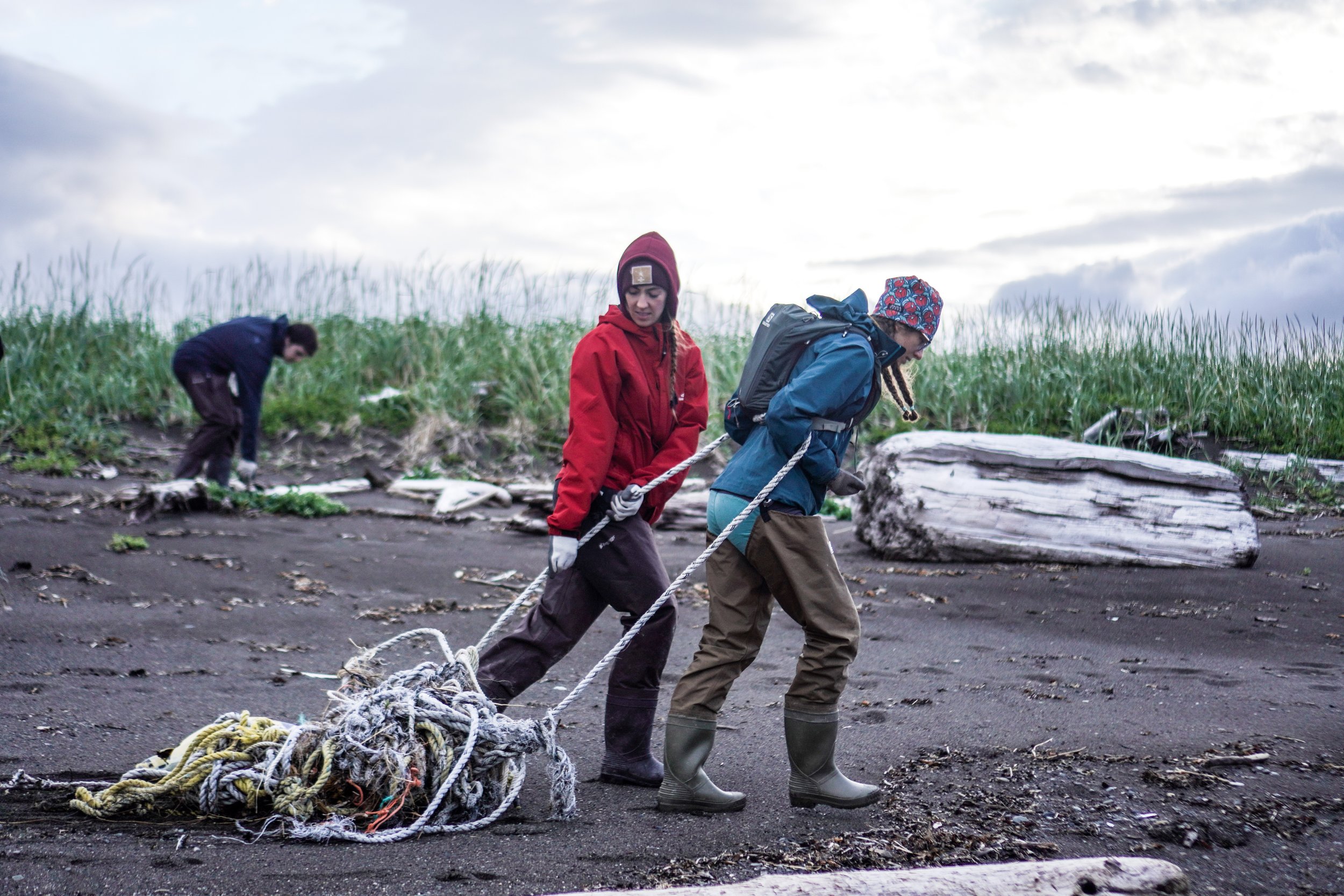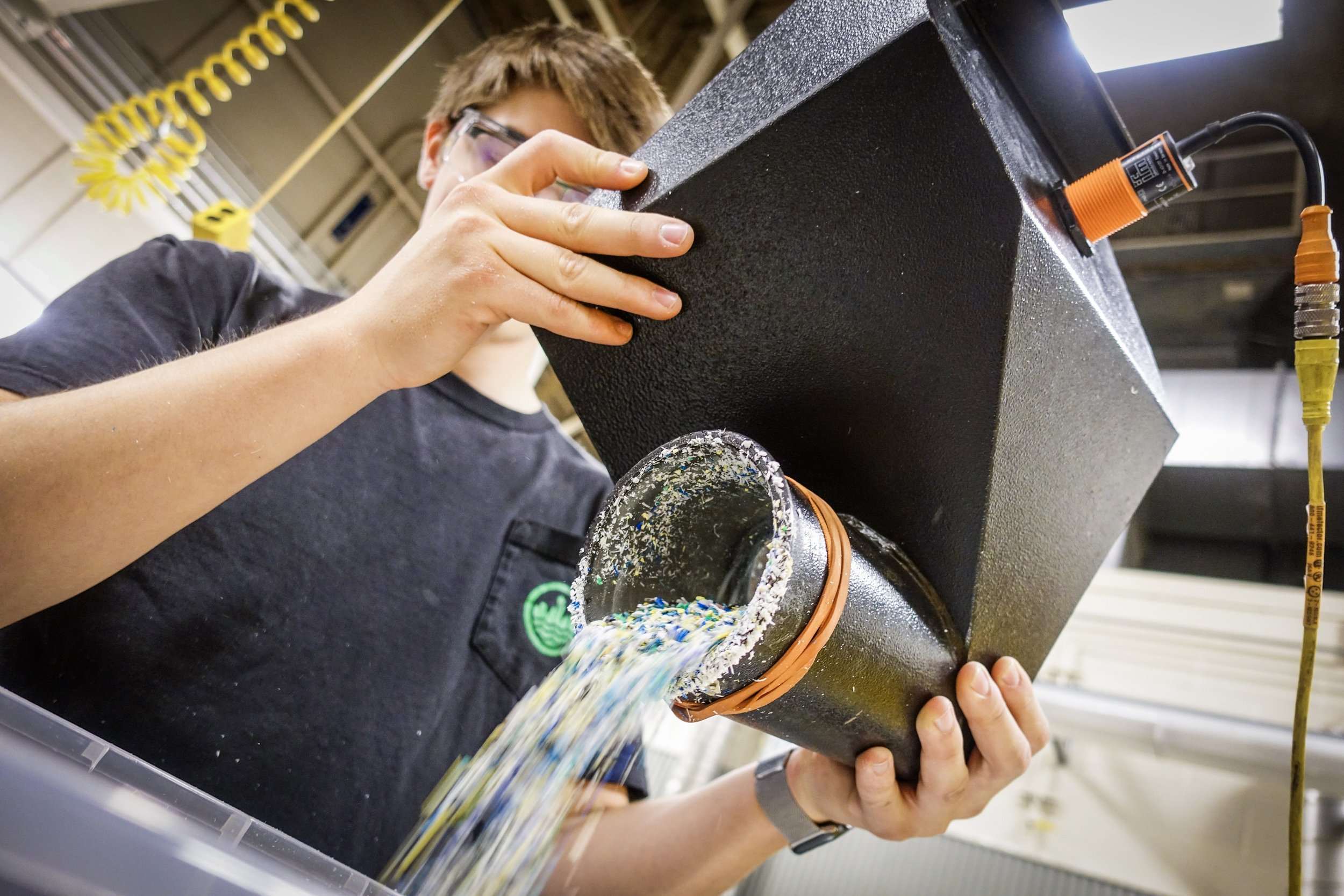Thoughts on a Marine Debris Action Plan for Alaska
Ayesha Wise and Eve Romey haul marine debris toward a cache site for removal, Katmai NP, July 2021. Max Romey photo.
OPR is excited to learn that NOAA is taking steps toward the creation to creation of a marine debris action plan for Alaska, the home of all of OPR’s clean-ups to date. Here, we share some thoughts on components of a strong plan to address marine debris in the region.
Collection
It should go without saying, but collection should remain a high priority. This is due to the extent of coastline, perceived amount of marine debris and current shortage of resources to adequately remove it. Plastics, including lost gear, pose a threat to the interconnected ecosystems of the North Pacific. Collection efforts must match the scale of the problem and capture materials before they breakdown and get absorbed by the environment, including in fish of commercial importance.
Prevention
Prevention is also a top priority for addressing the global plastic waste crisis. In Alaska, most rigid plastic materials come by way of the North Pacific current and are not locally generated. Currently, our greatest opportunities to prevent marine debris is by reduction of lost fishing gear. As a general rule, the composition (by weight) of recovered marine debris in the GOA over the past decade is about 50% lost and abandoned fishing gear.
Metrics
Efforts should be made to aggregate and publish data on past cleanups, and to collect data to better understand the road ahead. These metrics are critical in making the case for continued effort in Alaska and must come from a recognized authority.
Recycling & Recovery
Backhaul routes for the recycling and recovery of marine debris should be identified, and synergies should be explored with related waste streams of end-of-life fishing gear and post-consumer recyclables. New recycling and recovery markets are emerging, but they will develop more quickly if materials can be aggregated. With the relative isolation of many of Alaska’s coastal communities, a high level of outreach and coordination is required.
Understanding Impacts
Efforts should be made to advance the understanding of how marine debris affects marine and coastal ecosystems in Alaska. This would include increasing our understanding of entanglement and ingestion issues for specific species, but also investigating the potential for disrupting natural ecosystems that provide carbon capture and sequestration services to the planet.
Resilience
Alaska coastal communities should be equipped and empowered to respond to marine debris incidents like the one that occurred in the Bering Sea in 2020. While Alaska Native peoples involved in the clean‐up effort should benefit from the associated economic activity, we should not become overly dependent on their labor, which would place the burden of ocean plastics in their region entirely on them.
Outreach & Education
We believe story of ocean clean‐ups, well told, can not only reduce plastic pollution but fuel demand for more ocean‐recycled content, driving the trend of responsibly sourced plastics in an upward spiral until circularity is achieved. Outreach and education about marine debris should not be limited to coastal Alaskans, or Alaskans in general, but should reach as wide an audience as possible.
With these thoughts in mind, we look forward to engaging in this process of working with NOAA, the NPFMC and others on a regional marine debris plan for Alaska.


